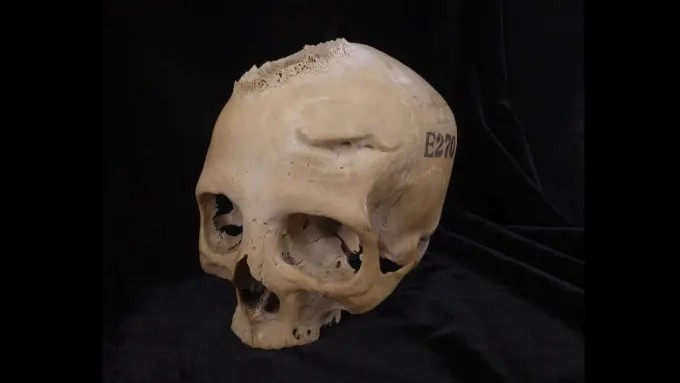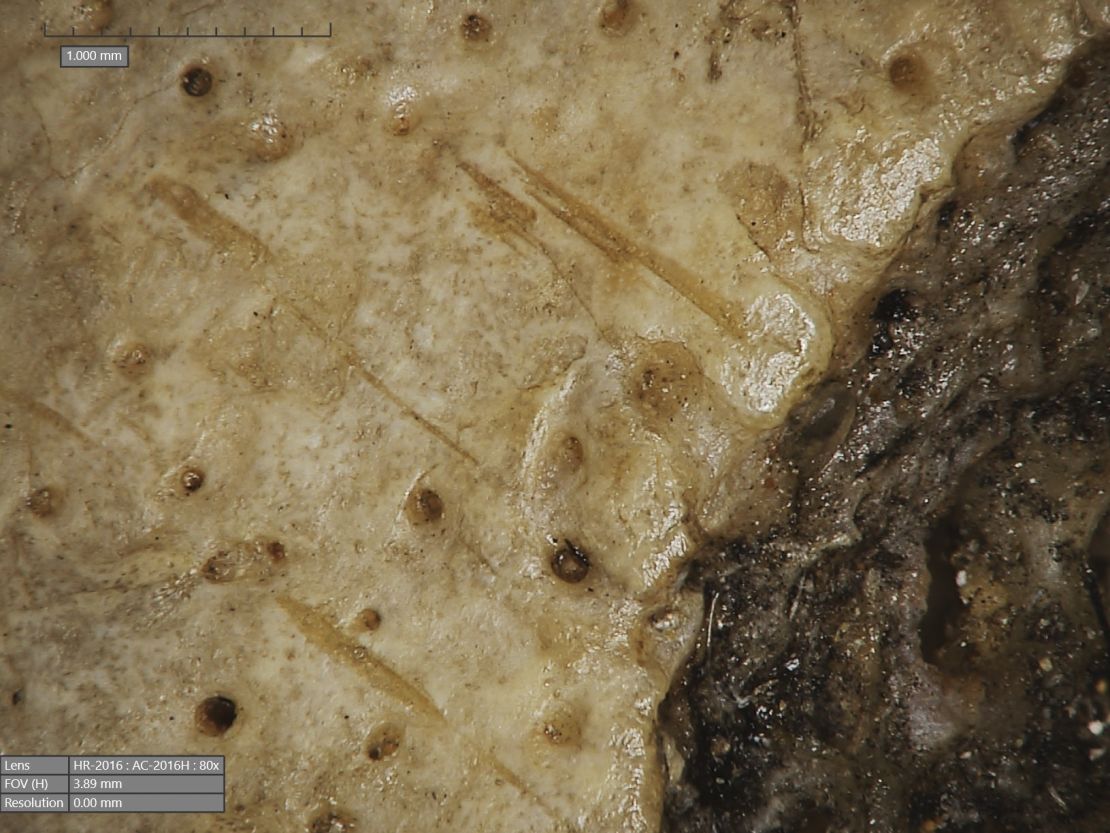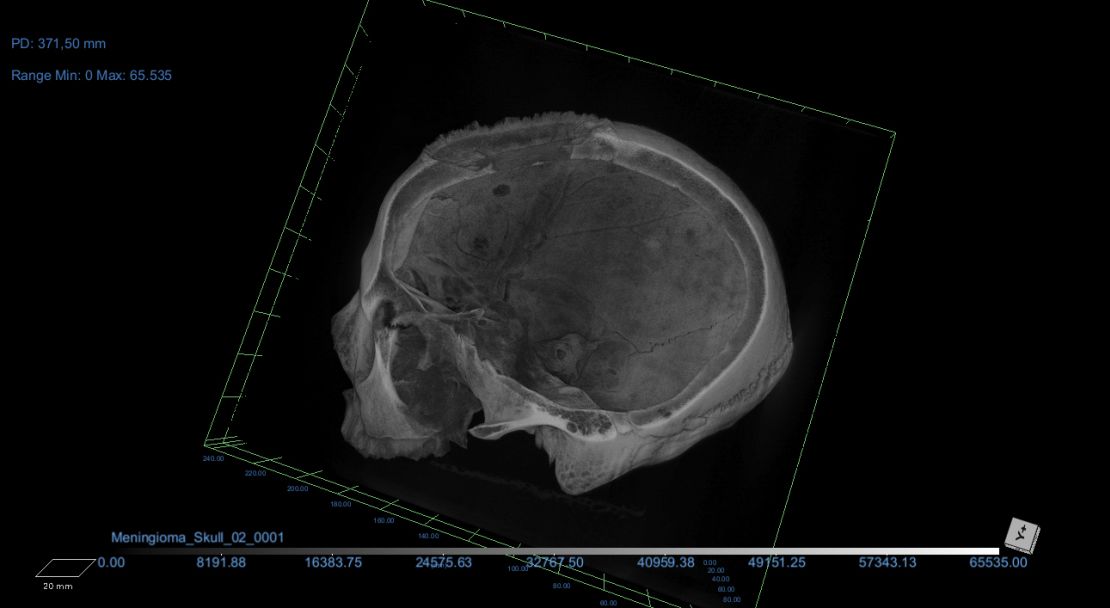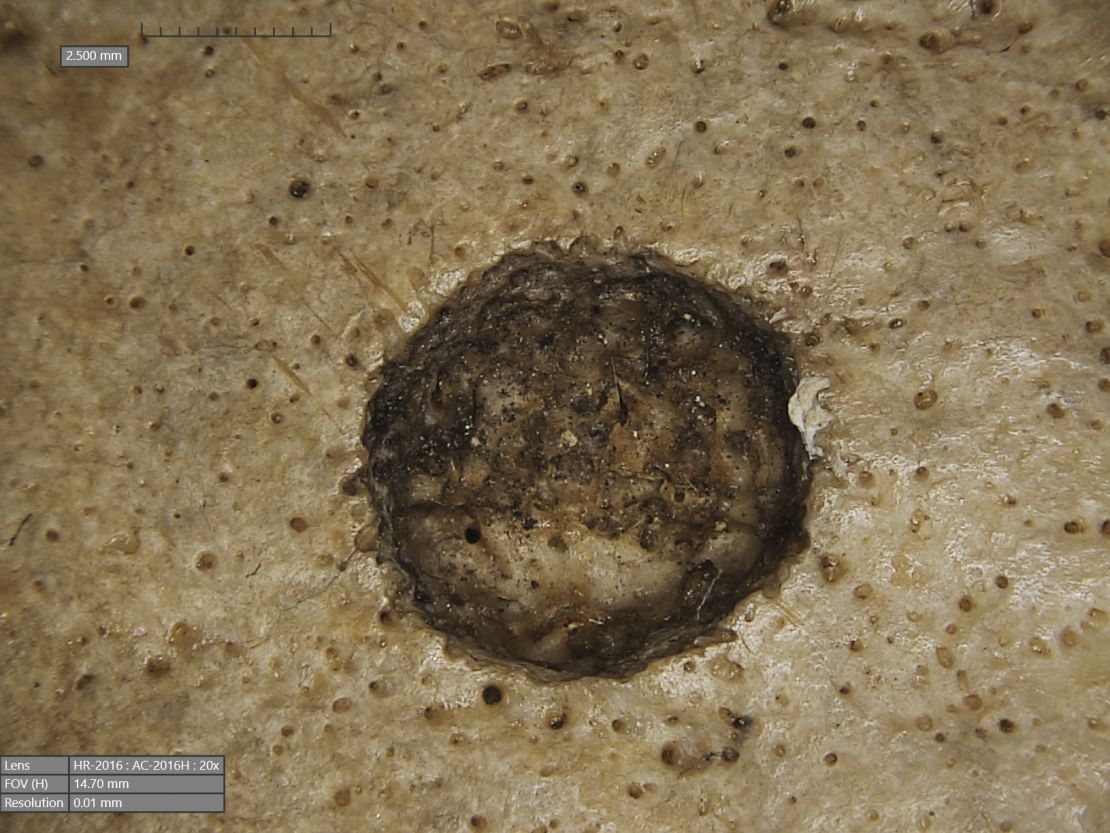Cancer is often regarded as a disease of the modern age. However, medical texts from ancient Egypt indicate that healers of the time were aware of the condition.
Now, new evidence from a skull more than 4,000 years old has revealed that ancient Egyptian physicians may have tried to treat certain cancers with surgery.
The skull belonged to a man who was about 30 to 35 years old when he died, and it resides in the Duckworth Laboratory collection at the University of Cambridge in the United Kingdom.
Since the mid-19th century, scientists have studied the skull’s scarred surface, including multiple lesions thought to represent bone damage from malignant tumors.

Courtesy Tondini, Isidro, Camarós
Archaeologists regard the skull, labeled 236 in the collection, as one of the oldest examples of malignancy in the ancient world, dating back to between 2686 BC and 2345 BC.
But when researchers recently peered more closely at the tumor scars with a digital microscope and micro-computed tomography (CT) scans, they detected signs of cut marks around the tumors, suggesting that sharp metal instruments had been used to remove the growths.
The scientists reported the findings Wednesday in the journal Frontiers in Medicine.
“It was the very first time that humanity was dealing surgically with what we nowadays call cancer,” said senior study author Dr. Edgard Camarós, a professor in the department of history at the University of Santiago de Compostela in Coruña, Spain.
However, it’s unknown whether the healers tried to remove the tumors while the patient was still alive, or if the tumors were removed after death, for analysis, Camarós told CNN.
“If those cut marks were done with that person alive, we’re talking about some kind of treatment directly related to the cancer,” he said. But if the cut marks were made posthumously, “it means that this is a medical autopsy exploration in relation to that cancer.”
Either way, “it’s amazing to think that they performed a surgical intervention,” Camarós added. “But we cannot actually distinguish between a treatment and an autopsy.”

Medical ‘knowledge and mastery’
Medicine in ancient Egypt, documented extensively in medical texts such as the Ebers Papyrus and the Kahun Papyrus, was unquestionably sophisticated, and the new findings offer important, direct evidence of this knowledge, said Dr. Ibrahem Badr, an associate professor in the department of restoration and conservation of antiquities at Misr University for Science and Technology in Giza, Egypt.
“We can see that ancient Egyptian medicine was not solely based on herbal remedies like medicine in other ancient civilizations,” said Badr, who was not involved in the new research. “It directly relied on surgical practices.”
But while this evidence from antiquity was well studied during the 19th and 20th centuries, 21st century technologies, such as those used in the new study, are revealing previously unknown details about ancient Egypt’s medical arts, Badr added.
“The research provides a new and solid direction for reevaluating the history of medicine and pathology among ancient Egyptians,” he said. The study authors’ methods “transition their results from the realm of uncertainty and archaeological possibilities to the realm of scientific and medical certainty.”
The scientists also found cancer lesions in a second skull from the Duckworth collection. Labeled E270 and dating from 664 BC to 343 BC, it belonged to an adult woman who was at least 50 years old. The team identified three lesions on the specimen where malignant tumors had damaged the bone.

The research team examined skulls from the Duckworth Laboratory collection at the University of Cambridge using microscopic analysis and CT scanning. Courtesy Tondini, Isidro, Camarós
Unlike skull 236, E270 showed no signs of surgery related to the disease. But the woman’s skull did contain long-healed fractures, showing the success of prior medical intervention for head injuries.
“That person survived many years after that trauma,” Camarós said.
Writing cancer’s ‘biography’
The analysis of both skulls “is a remarkable piece of research that provides new and clear scientific evidence about the field of pathology and the development of medicine among the ancient Egyptians,” Badr said.
Badr, who collaborates with scientists from Europe and the United States to study atherosclerosis (plaque buildup in arterial walls) in ancient Egyptian mummies, explained that his work follows the same scientific direction as the skull investigation. By conducting detailed examinations of mummies using 21st century technologies such as CT scans and DNA sequencing, Badr and his colleagues hope to further illuminate the extent of medical knowledge in Egyptian antiquity.
“There is an urgent need to reevaluate the history of Egyptian medicine using these scientific methodologies,” Badr said. “By utilizing these modern techniques, we will be able to study and gain a more comprehensive and precise understanding of medicine in ancient Egypt.”
The new findings also help to complete a portion of cancer’s “obscure biography” by adding a chapter that was written thousands of years ago, Camarós added.
“The more we look into our past, the more we know that cancer was much more prevalent, much more present than we thought,” he said.
A medical milestone
Ancient Egyptians’ perception of cancer centered around the visible tumors that the disease produced. The earliest recorded observation of cancer is in an ancient Egyptian medical text known as the Edwin Smith Surgical Papyrus, which dates back to around 3000 BC to 2500 BC. This text contains 48 case studies covering diverse ailments, including one description of breast cancer.

While healers in ancient Egypt may have been aware of cancer, treating it was another story. Most of the medical cases in the Edwin Smith papyrus included mention of medicines or strategies for healing. But there was none for the breast cancer patient’s tumors, Camarós said.
“It specifically says there’s no treatment,” he said. “They realized this was a frontier when it came to their medical knowledge.”
However, the incisions around the skull tumors suggest that healers in ancient Egypt were trying to change that, surgically removing the tumors to either heal the patient, or to examine the tumors more closely.
“We have these two possibilities: in a way that they tried to treat it, or in a way that they tried to medically understand it, in terms of probably treating it in the future,” Camarós said. “I think that’s a milestone in the history of medicine.”
Latest Stories
-
Postecoglou backs Bentancur appeal after ‘mistake’
15 mins -
#Manifesto debate: NDC to enact and pass National Climate Law – Prof Klutse
24 mins -
‘Everything a manager could wish for’ – Guardiola signs new deal
34 mins -
TEWU suspends strike after NLC directive, urges swift resolution of grievances
41 mins -
Netflix debuts Grain Media’s explosive film
1 hour -
‘Expired’ rice scandal: FDA is complicit; top officials must be fired – Ablakwa
2 hours -
#TheManifestoDebate: We’ll provide potable water, expand water distribution network – NDC
2 hours -
IPR Ghana@50: Pupils educated to keep the environment clean
2 hours -
PenTrust CEO named ‘Best Pensions CEO’, company wins ‘Scheme Administrator Award’ at Ghana Accountancy & Finance Awards 2024
2 hours -
Alan Kyerematen’s ‘Brighter Future for Health Professionals’ in Ghana Revealed in Bono
3 hours -
#TheManifestoDebate: NPP will ensure a safer, cleaner and greener environment – Dr Kokofu
3 hours -
2024 Election: Police to deal with individuals who will cause trouble – IGP
3 hours -
Seychelles President’s visit rekindles historical and diplomatic ties with Ghana
3 hours -
Election 2024: EC destroys defective ballot papers for Ahafo and Volta regions
3 hours -
2024 Election: I am sad EC disqualified me, but I endorse CPP’s candidate – PNP’s Nabla
3 hours
